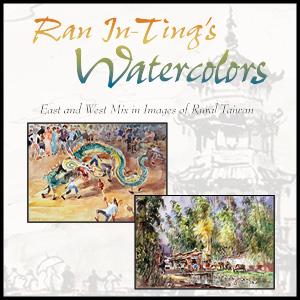Exhibition Dates:
Saturday, May 28, 2011 to Sunday, Aug 14, 2011
This exhibition focuses on the art of the painter Ran In-Ting (Lan Yinding, 1903–1979), one of Taiwan’s most famous artists. Born in Luodong town of Yilan county in northern Taiwan, he first learned ink painting from his father. After teaching art for several years, he spent four years studying painting with the important Japanese watercolor painter Ishikawa Kinichiro (1871–1945).
With a deep understanding of Chinese brushwork and the elegant watercolor strokes of Ishikawa, Ran developed a unique style that emphasized the changes in fluidity of ink and watercolor. By mastering both wet and dry brush techniques, he succeeded at deftly controlling the watery medium. Complementing this with a wide variety of brushstrokes and the use of bold colors, Ran created watercolors possessing an elegant richness like that found in oil painting.
An amalgamation of traditional Chinese painting and western style art, Ran’s works move between the multiple perspectives of the Chinese tradition and the single perspective of Western compositions, which includes a foreground, middle, and background. His works of art thus bear witness to the effects of Japan’s colonial rule of Taiwan (1895–1945) as well as his training with the Western-style Japanese artist Ishikawa.
Ran’s impressionistic watercolors portray a deeply felt record of life in Taiwan, touching on the natural beauty of rural life and vivacity of the suburban scene. Capturing the excitement of a dragon dance with loose and erratic strokes, the mystery and magic of the rice paddies with flowing pools of color, and the shimmering foliage of the forests with a rainbow of colors and dextrous strokes, his paintings are a vivid interpretation of his homeland.
The compositions attract and transport the viewer to the enduring but also changing lands of Taiwan. Created by an artist tied to the past and looking through the lenses of both western and eastern art, these watercolors and ink paintings provide glimpses of the exotic beauty and culture of Taiwan. The artworks in this exhibition come from the Museum’s significant collection of this artist’s work, one of the largest such holdings in the United States.
